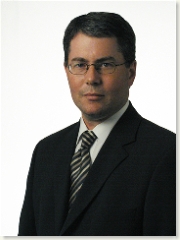 Yesterday, RBC Financial Group Chief Economist Craig Wright delivered an encouraging message to an audience of Canadian business executives. Overall, Canada’s economy remains strong and is likely to sustain continued moderate growth.
Yesterday, RBC Financial Group Chief Economist Craig Wright delivered an encouraging message to an audience of Canadian business executives. Overall, Canada’s economy remains strong and is likely to sustain continued moderate growth.
Why do I care? Well, because as the CEO of a public relations firm, I know that my business will be among the first to be affected by a downturn in the economy. So, I am always trying to look over the horizon to gain as much time as possible to prepare for shifts in the economy.
But yesterday’s briefing gave me confidence that I can proceed with the growth plans my company has to take advantage of the development of social media. While there are some pockets of concern (i.e. manufacturing, particularly the auto industry in Ontario), the overall outlook is positive. And that means that I can count on my clients continuing to be open to opportunities to use social media to better connect with their customers, clients and stakeholders.
Mr. Wright offered a wealth of data and analysis, delivered at a break neck pace. Some of the points that stood out for me:
- Canada will continue to experience offshoring to China. This will be manifested in short term job dislocation, but it should lead to long term productivity improvements in Canada.
- Oil (something that should be near and dear to the hearts of not only Albertans, but all Canadians): As the speculative froth comes out of oil prices, oil will stay in the $58 to $60 barrel range. That means oil prices around current levels, but above what they have been in recent years.
 The Canadian Dollar: Commodity prices will come off their highs as global growth moderates. This will take the pressure off the Canadian dollar. It should drift lower to U.S. .85 by the end of the year and the low .80s by next year.
The Canadian Dollar: Commodity prices will come off their highs as global growth moderates. This will take the pressure off the Canadian dollar. It should drift lower to U.S. .85 by the end of the year and the low .80s by next year.- Consumers in the U.S., like Canada, are sitting on strong liquidity. So, they are well positioned to deal with the housing slowdown. We’re looking at a soft landing. A housing market that is cooling, not collapsing. There is some risk for Canada, but the reslience of the Canadian economy is quite striking. Low inflation and sound fiscal policy are positive factors in Canada.
- Exports will remain weak. So, growth in Canada will have to come from internal growth. And prospects are good for that.
- The investment side of Canada looks strong. Corporate balance sheets in Canada are very strong. The tightening of the labour market has put the focus on investment. And investment will provide the basis for future growth.
- Canada’s Banks will be meeting with the Finance Minister next week as part of the fall planning season for the next five year period. As we move forward, a lot of the fiscal surpluses have already been earmarked for spending, so we should not expect significant tax cuts.
- Canada is the only G7 country paying down our debt.
- Nine of the ten provinces are now in surplus (except PEI). The feds are in surplus. Going forward, Ontario may dip back into deficit. Growth prospects have been reduced. So, going forward, Ontario has some challenges.
- We are probably at the peak of interest rates. The next change by the Bank will be down, probably in the second half of next year.
- Consumer, investment, government all add to the growth prospects, offsetting a weakness in trade.
- One problem area is skill shortages. We’re running with a 32 year low in unemployment. We’re seeing a swing in immigration patterns toward Alberta and away from Ontario.
- Alberta’s economy remains strong and will continue to grow. The challenges will be Ontario’s – in manufacturing and specifically the auto sector.
- Ontario growth will be 1.5% this year and 2% next year.
In summary, we’re looking at some external challenges. Coming off the best four years on record, it’s reasonable to expect some slow down. However, the Canadian economy is resilient. Last year, growth was 2.9%, this year it will be around 2.8%, next year projected for 2.7%.
Not a bad environment overall as we move forward. And a good foundation to plan for continuing growth in the social media and PR business.




 The 2006 IABC International Conference wraps up with s series of All-Star Sessions featuring some of the top-rated speakers from past IABC conferences. (All-Stars seem to need extra sleep. Today’s sessions don’t begin until 8AM, compared with the 7:15 and 7:00 starts for the still-aspiring speakers on Monday and Tuesday.)
The 2006 IABC International Conference wraps up with s series of All-Star Sessions featuring some of the top-rated speakers from past IABC conferences. (All-Stars seem to need extra sleep. Today’s sessions don’t begin until 8AM, compared with the 7:15 and 7:00 starts for the still-aspiring speakers on Monday and Tuesday.)


 Counselors Academy
Counselors Academy 